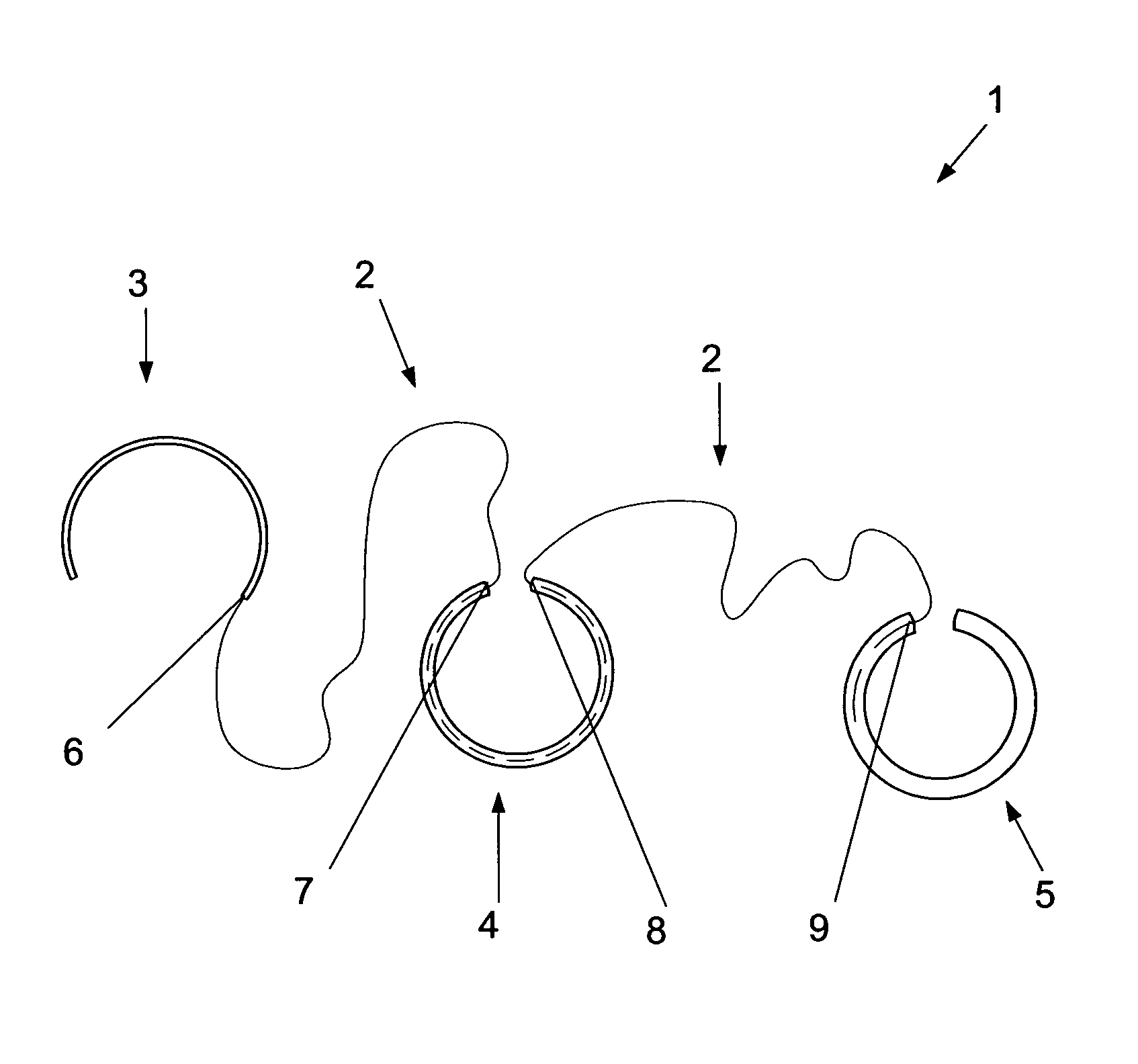Process of use of a device for cornea transplantation
- Summary
- Abstract
- Description
- Claims
- Application Information
AI Technical Summary
Benefits of technology
Problems solved by technology
Method used
Image
Examples
Embodiment Construction
[0019]As seen in FIG. 1, the inventive device for cornea transplantation without suture comprises an apparatus consisting of a series of arc segments of interconnected through a wire, which goes through the internal body structure of each arc segment. The first arc segment 3, also referred to herein as the “segment guide”, is an arc segment which is preferably made of polymethylmethacrylate (PMMA), and which can vary from an arc of 160 degrees to an arc of 330 degrees. First arc segment 3 has a circular cross-section and a rounded edge, to help it slide inside a tunnel-like opening made previously by a femtosecond laser in both the donor cornea and the recipient cornea, and progress along that opening. First arc segment 3 is a circular segment, and its diameter can range from 5 to 11 mm depending on the purpose of the transplantation and the surgeon's plans.
[0020]The first arc segment 3 or segment guide is connected at an end 6 thereof to a second arc segment 4 by a polypropylene wi...
PUM
 Login to View More
Login to View More Abstract
Description
Claims
Application Information
 Login to View More
Login to View More - R&D
- Intellectual Property
- Life Sciences
- Materials
- Tech Scout
- Unparalleled Data Quality
- Higher Quality Content
- 60% Fewer Hallucinations
Browse by: Latest US Patents, China's latest patents, Technical Efficacy Thesaurus, Application Domain, Technology Topic, Popular Technical Reports.
© 2025 PatSnap. All rights reserved.Legal|Privacy policy|Modern Slavery Act Transparency Statement|Sitemap|About US| Contact US: help@patsnap.com


